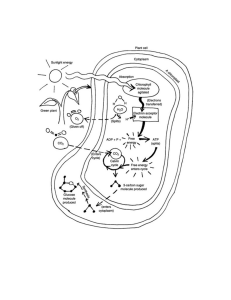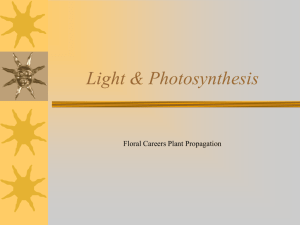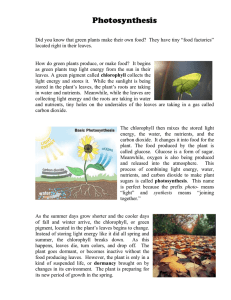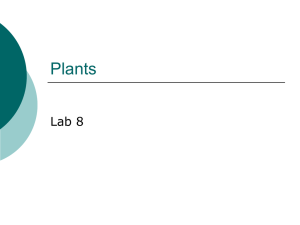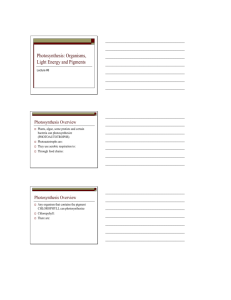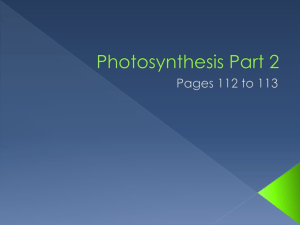Notice the green organelles in the plant cell. These are
advertisement
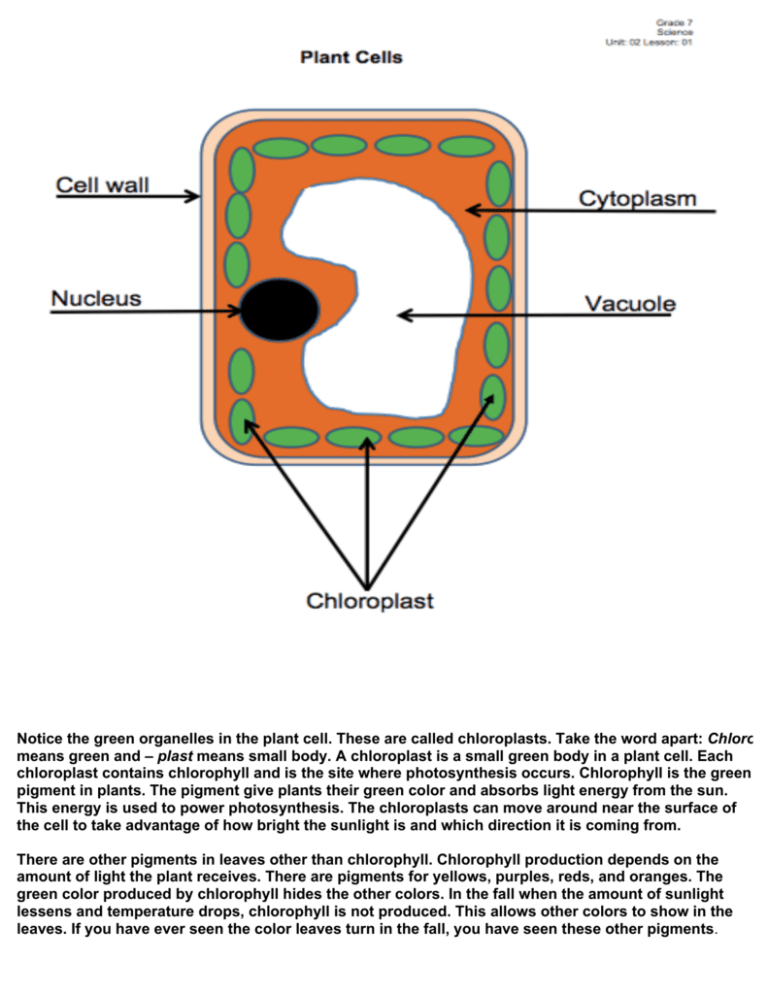
Notice the green organelles in the plant cell. These are called chloroplasts. Take the word apart: Chloromeans green and – plast means small body. A chloroplast is a small green body in a plant cell. Each chloroplast contains chlorophyll and is the site where photosynthesis occurs. Chlorophyll is the green pigment in plants. The pigment give plants their green color and absorbs light energy from the sun. This energy is used to power photosynthesis. The chloroplasts can move around near the surface of the cell to take advantage of how bright the sunlight is and which direction it is coming from. There are other pigments in leaves other than chlorophyll. Chlorophyll production depends on the amount of light the plant receives. There are pigments for yellows, purples, reds, and oranges. The green color produced by chlorophyll hides the other colors. In the fall when the amount of sunlight lessens and temperature drops, chlorophyll is not produced. This allows other colors to show in the leaves. If you have ever seen the color leaves turn in the fall, you have seen these other pigments.



